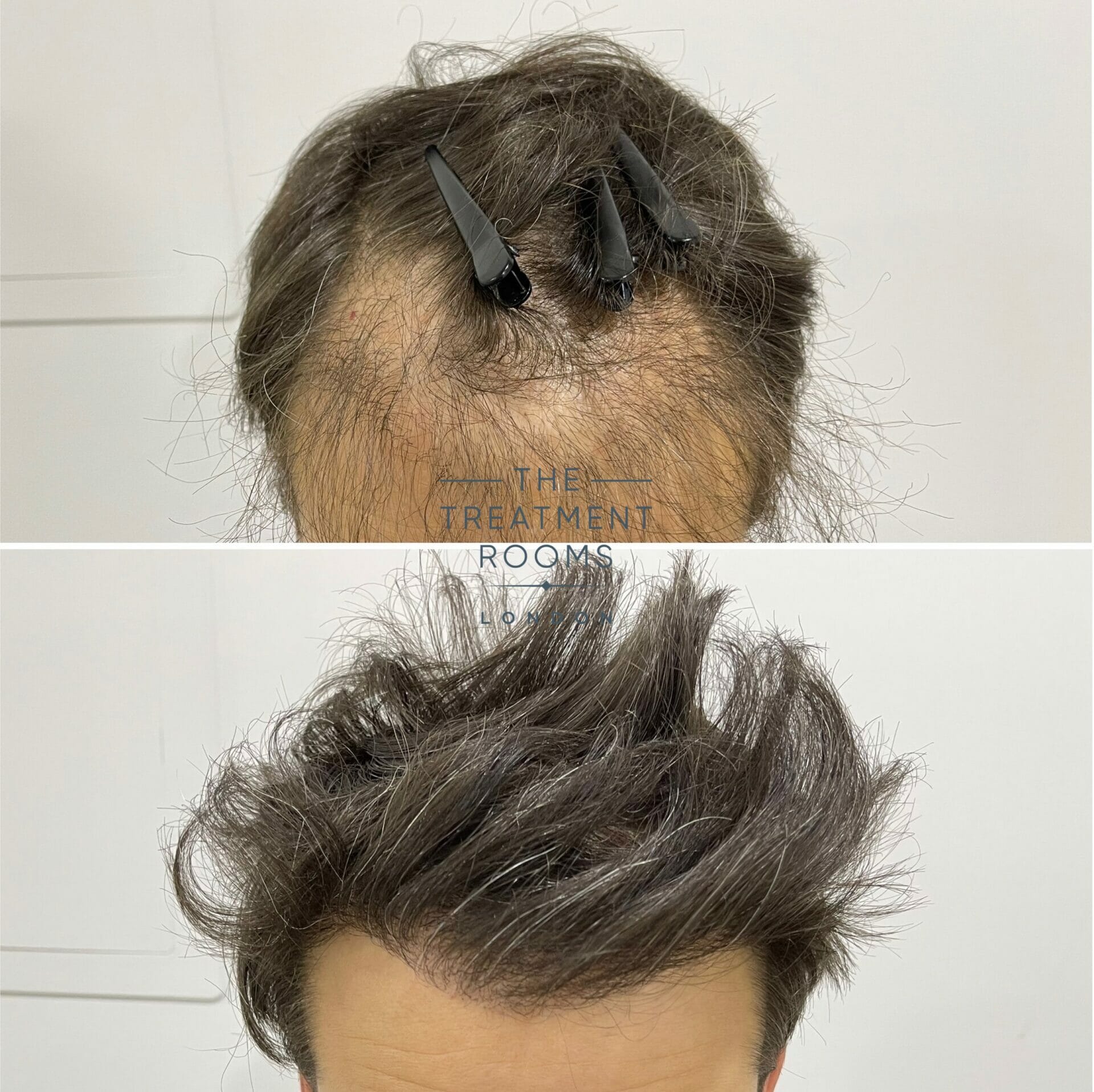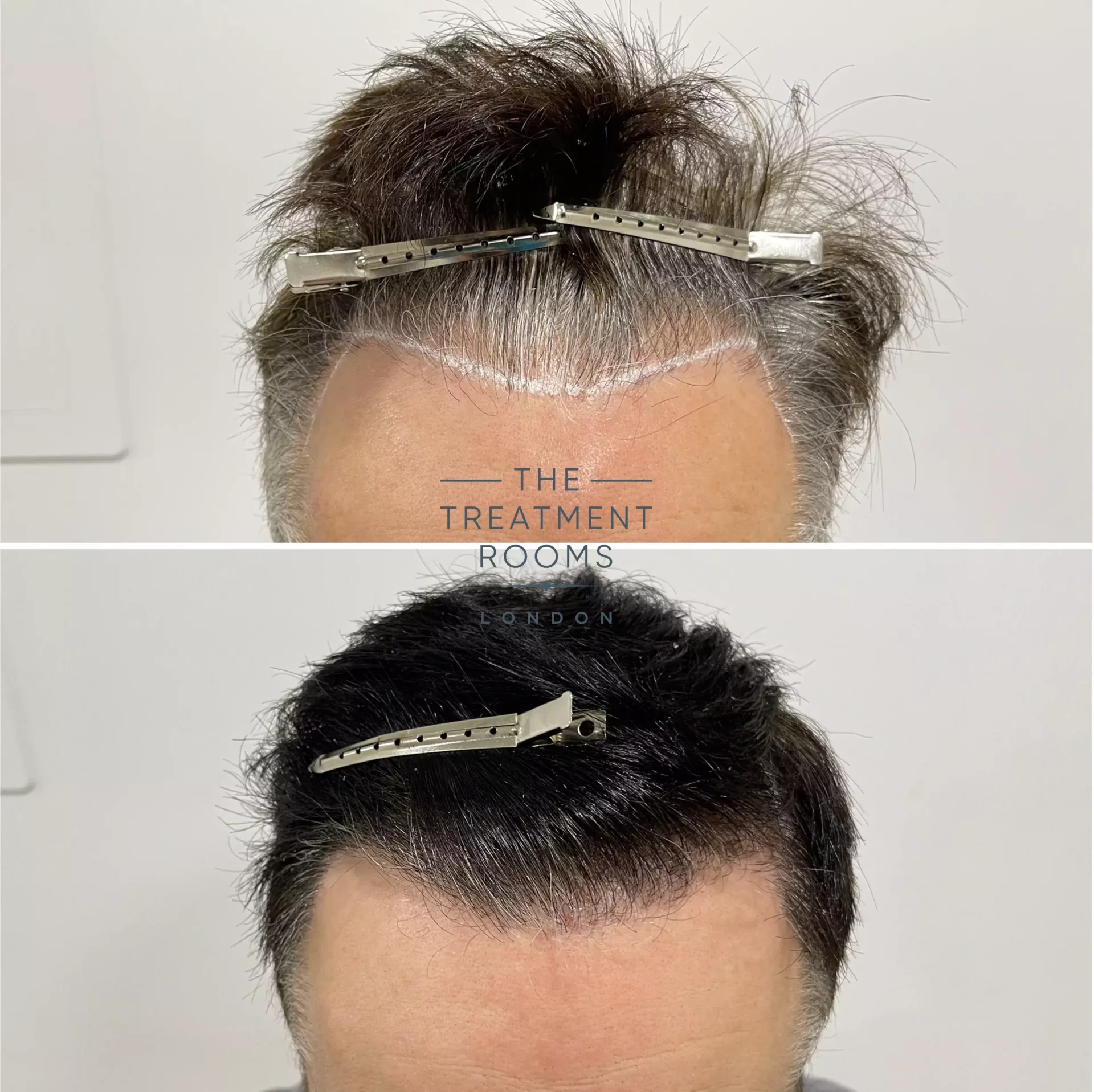Not Happy With Hair Transplant Results? Here’s What To Do
Hair transplants are generally a safe and effective procedure, with a success rate of around 90–95%. However, in some rare instances, you may be unhappy with your hair transplant. Perhaps you’ve experienced some scarring or insufficient growth, or you’re not happy with the look you’ve ended up with.
Thankfully, there are options available that can help correct a hair transplant that doesn’t meet expectations.
In this article, we look at some of the most common reasons why hair transplants might fail, what to look out for if you think yours might have gone wrong and what you should do if a hair transplant doesn’t meet expectations.

Reasons why some hair transplants fail
While they’re generally a success, there are a number of reasons why a hair transplant might fail. If your hair transplant doesn’t take, don’t be put off the process entirely — understanding why a hair transplant might fail can help you make a better-informed decision going forward.
Here we’ll look at a few of the most common reasons why some hair transplants fail.
Hair transplant graft rejection
Graft rejection is one of the most common reasons your hair transplant can fail. This is often compared to kidney or heart transplant rejections and is usually interpreted as the body not accepting the transplanted hair.
However, this is not the case. Instead, it means that the transplanted hair follicles won’t grow normally along with the rest of the hair. This can be down to a variety of factors, including a disease known as lichen planopilaris.
This condition affects the hair by attacking and destroying the hair follicle, after which a degree of scarring remains. This results in permanent hair loss and is a contributor to why hair transplants fail to grow in some individuals and can be undetected before surgery is even performed.
Ineligibility for hair transplants
Your general level of health and the condition of your hair cannot be overestimated when considering why hair transplants fail.
The ideal hair transplant candidate has a healthy donor area of hair, and is generally below the age of 65. Failure to have a thick, healthy donor area with hair that is viable for transplantation can ultimately lead to a failed hair transplant.
Poor hair transplant aftercare
The recovery and aftercare process is an essential part of any hair transplant. Correct post-transplant care helps support the transplanted hair follicles — promoting growth and assisting with healing the donor and transplant areas.
Consequently, failing to follow optimal aftercare can result in a failed hair transplant. If you receive a hair transplant, be sure to follow any advice your surgeon gives you. This can include sleeping in a position that avoids friction in the transplanted area, as well as avoiding applying any prolonged pressure to that area too.
Inexperienced hair transplant surgeons or clinics
In some instances, a hair transplant may fail due to poorly skilled or inexperienced surgeons or clinics.
While hair transplants are generally a safe operation, due to their popularity, many clinics offer the service but fail to meet the strict safety and hygiene guidelines required. An inexperienced surgeon may transplant the wrong donor grafts, for instance, or overharvest the transplanted hair follicles. Unhygienic clinic practices can also contribute to failed hair transplants.
When considering a hair transplant, be sure to choose a clinic that is registered with and inspected by the Care Quality Commission (CQC), a regulatory body that ensures safe, quality clinical practice in every healthcare clinic.
You should also check whether your chosen surgeon is registered with the British Association of Hair Restoration Surgery (BAHRS) and the General Medical Council (GMC). These professional organisations ensure your chosen hair transplant surgeon is regulated and works according to their rigorous codes of conduct.
For more information and advice, visit our article on how to find a good hair transplant surgeon in the UK.
How to tell if you’ve had a bad hair transplant
Although they’re usually successful, bad hair transplants can happen. There are several ways you can tell if you’ve had a bad hair transplant. These include:
- Excessive scarring: this is usually caused by below-standard surgical tools or an incorrect technique performed by an inexperienced surgeon.
- Unnatural direction of hair growth: identified by transplanted hair growing in the wrong direction, this is often caused by poor surgeon technique.
- Infection: excessive swelling or redness around the transplanted area may be a sign of infection, and is typically caused by unsanitary surgical tools.
- Unusual hairline: often characterised by an unnatural angle, this is also due to poor technique or inexperience.
- Insufficient hair growth: usually measured 12 months after surgery, poor hair growth can be due to a variety of reasons including poor aftercare.
If you are experiencing any of these symptoms after your hair transplant, do not be disheartened — it can take 9-12 months after your surgery to start seeing real results. Be patient and wait for at least a year before fully assessing your hair transplant.
What to do if a hair transplant doesn’t meet expectations?
Sometimes, hair transplants don’t quite meet the patient’s expectations. If you feel your hair transplant doesn’t match up to what you expected and you’re not happy with the results, there are several options available to you.
A second hair transplant
If your first hair transplant didn’t deliver the results you expected, a second hair transplant is still an option.
A second hair transplant can help improve follicle density in the affected areas, as well as add coverage for large balding spots. Many patients choose a second hair transplant if they feel their first one failed and they are simply not happy with the results.
Before you get a second hair transplant, your surgeon will first need to assess your eligibility.

Platelet-rich plasma therapy
One of the main reasons why patients feel their hair transplant doesn’t meet their expectations is due to poor hair density. For some, high density isn’t achievable from a standard hair transplant, so your surgeon may recommend platelet-rich plasma (PRP) therapy.
PRP therapy involves safely extracting a small amount of the patient’s blood and then placing it in a centrifuge. This results in a concentrate that is rich with platelets, which is then injected into the affected area to help improve hair density.
Scalp micropigmentation
Scalp micropigmentation, also known as a hair tattoo, involves carefully filling up and completing any balding areas of the scalp with a coloured pigment to give the appearance of hair follicles.
These can be customised to suit the patient’s unique hair type and style, with adjustments for depth and angle available to help deliver a natural result. Scalp micropigmentation is often considered when it is not possible to achieve high-density hair transplantation.
Revision surgery
Revision surgery typically takes place following a failed hair transplant that occurred as a result of the surgeon’s poor performance. Most good hair transplant surgeons have malpractice insurance, so their warranty should cover any costs.
If you are not happy with your original clinic and are looking for a different clinic, Treatment Rooms London offers four types of revision surgery.
Unnatural hairline repair
If your hairline looks unnatural after your hair transplant, this can be corrected with a follicular unit extraction (FUE) transplant. This involves taking hair from a donor area with tiny punches and then transplanting it to create a new hairline or mask an unnatural one.
Poor follicle quality repair
If a poorly performed procedure results in insufficient hair follicle quality, these can be removed and replaced with new grafts taken from a donor area. This is also performed using the FUE procedure.
Poor hair density repair
Poor hair density is usually a result of insufficient hairs being transplanted during the original procedure. This is repaired using the FUE technique by implanting extra hairs into the affected area.
Wide FUT Scar repair
Wide scarring can occur after a follicular unit transplant (FUT) but can be remedied by again using the FUE procedure, combined with scalp micropigmentation. The replaced hair helps cover the worst of the scarring, while a hair tattoo helps blend it in, disguising any remaining scar tissue. To find out if you’re eligible for a hair transplant scar repair, please visit our page.
Book a consultation
If you are unhappy with your hair transplant, Treatment Rooms London offers a wide range of corrective techniques that can help disguise and remedy any bad transplants or unsatisfactory results. Our procedures are safe, and effective, and can help you achieve the look you want.
Book your consultation with Treatment Rooms London today.
‘The Treatment Rooms London, excellence in FUE hair transplant surgery.’
Sources
Book A Consultation

